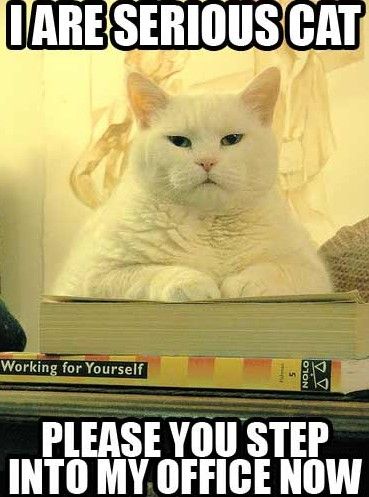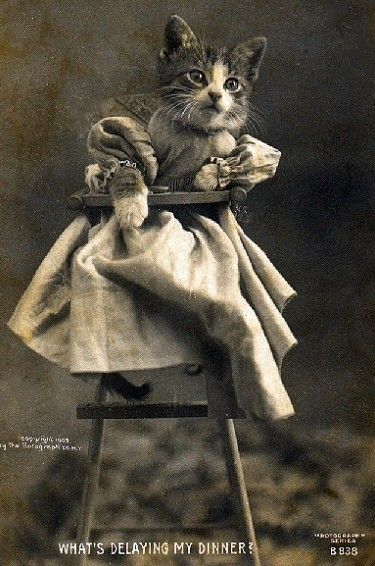Imagine a world without cats – what would it be? The world would be less exciting, less fascinating, and less fun. Cats are here for a reason. You already know that the ancient Egyptians worshipped them as gods. Nowadays, cats still rule – but this time on cyberspace. The website I Can Has Cheezburger proves that cats are still kings.
How I Can Has Cheezburger, a blog dedicated to cats being hilarious, built a web empire?
It all started in 2007 in Honolulu, Hawaii. The day was nothing remarkable for the website co-founder Eric Nakagawa. In fact, the software developer had just a rough day at work. Nakagawa asked his friend (and future co-founder) Kari Unebasami to send him something cute to make him feel better. Unebasami sent him a handful a cat images, including the most well-known image of “Happy Cat”: a picture of a fluffy British Shorthair superimposed with a deliberately misspelled and grammatically incorrect phrase: “I CAN HAS CHEEZBURGER?”
The humor in the picture worked so well that Nakagawa and Unebasami decided to create their own blog devoted to cats being funny. The website was just for their own kicks, but little did they know that it would become a massive online and cultural phenomenon.
While it wasn’t much of a problem, the founders engineered the site to allow users to submit their own LOLcats photos. As I Can Has Cheezburger’s popularity grew, it became synonymous with the LOLcat meme. Others tried to ride on its popularity by registering similar URLs.
Not long after I Can Has Cheezburger launched, the website founders became so overwhelmed that they were considering closing it down. Nakagawa told the magazine Wired back in 2008, “It was too much work.”

But in the nick of time, Internet entrepreneur Ben Huh got into the picture. It was in April 2007. According to Huh, I Can Haz Cheezburger – which he had not heard of before – linked to his web page. The result was a flood of traffic that caused Huh’s own website to crash. Nakagawa profusely apologized to Huh and promised to remove the link. But in a fortunate stroke of serendipity, a friendship formed between Huh and the two website founders.
The following July, Huh offered to buy I Can Has Cheezburger and save the website founders the headaches it was causing them as it grew in popularity and gave them seemingly overwhelming server issues. Time magazine wrote that Huh and his investors paid $2 million for I Can Has Cheezburger. Huh appointed himself as CEO.
Huh later admitted that when he acquired the website, “we had absolutely no idea what the hell we were doing.” But eventually, they decided to leave I Can Has Cheezburger as it was, rather than trying to make significant changes to improve its traffic. He attributed the site’s steady growth to its loyal community. Huh said, “Without submissions (of users’ LOLcats), there’s no content. And without content, there’s no traffic.” Fortunately, it turned out to be the best decision, as the site’s traffic even grew more exponentially.
Spin-off projects
Soon after he bought the website, Huh founded the Cheezburger Network, a network of related sites that include the original I Can Has Cheezburger website. These sites are linked to each other. In 2010, the Cheezburger Network reached its traffic peak, garnering about 375 million views per month across I Can Has Cheezburger and its sister sites that include FAIL Blog and Know Your Meme.
Another I Can Has Cheezburger-related project was a book entitled I Can Has Cheezburger?: A LOLcat Colleckshun, which was published in 2008. Also, FAIL Blog came out with a book entitled Fail Nation: A Visual Romp Through the World of Epic Fails in 2009.
Although I Can Has Cheezburger made cat memes a huge cultural phenomenon, it wasn’t the first site to explicitly feature them. SomethingAwful and 4chan had already been in the business churning out cat memes for years. But they weren’t even the first ones to introduce funny cat pictures to the world!
The practice dates back much even further. This 1905 cat photo by American photographer Harry Whittier Frees might be the progenitor of today’s LOLcats:
Frees was quite ahead of its time! Like Huh, Frees knew that cats and their versatile appeal would take the world by storm one day.
These days, because of too much exposure to the Internet, we may have become less surprised and thrilled by what becomes popular and “trending” online. It was a far cry to what happened just over a decade ago. Who would have thought that a blog with cat photos accompanied by ludicrously misspelled phrases could be instrumental in making Internet memes profitable and become a massive cultural phenomenon?


